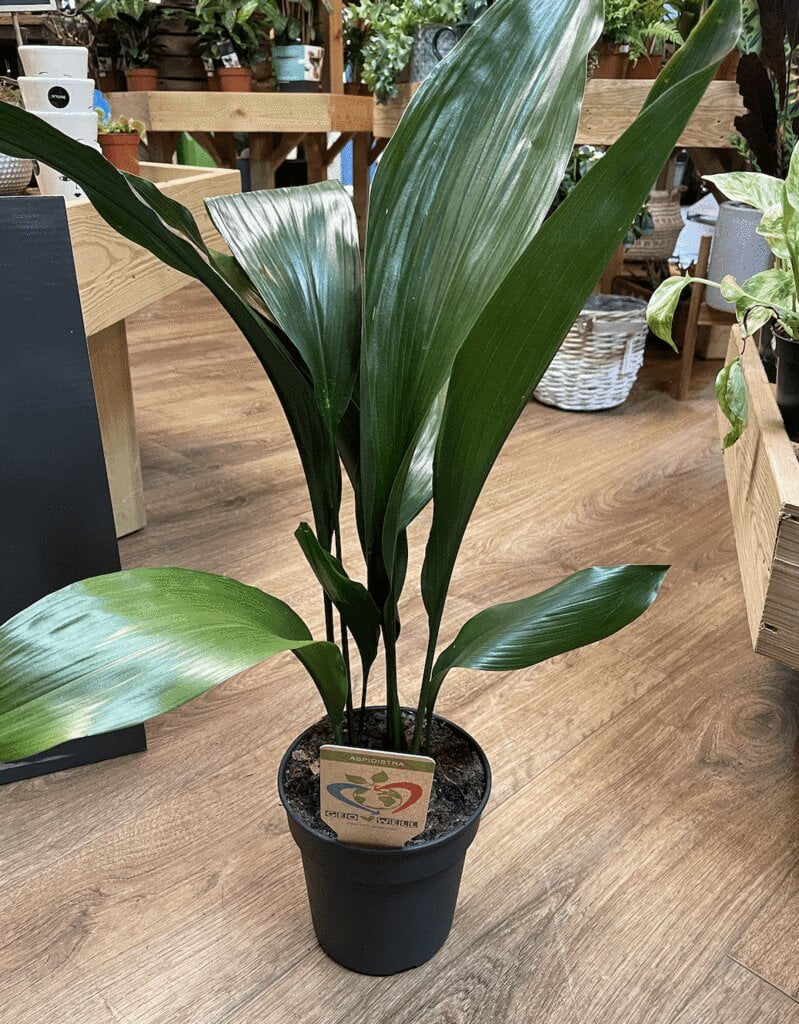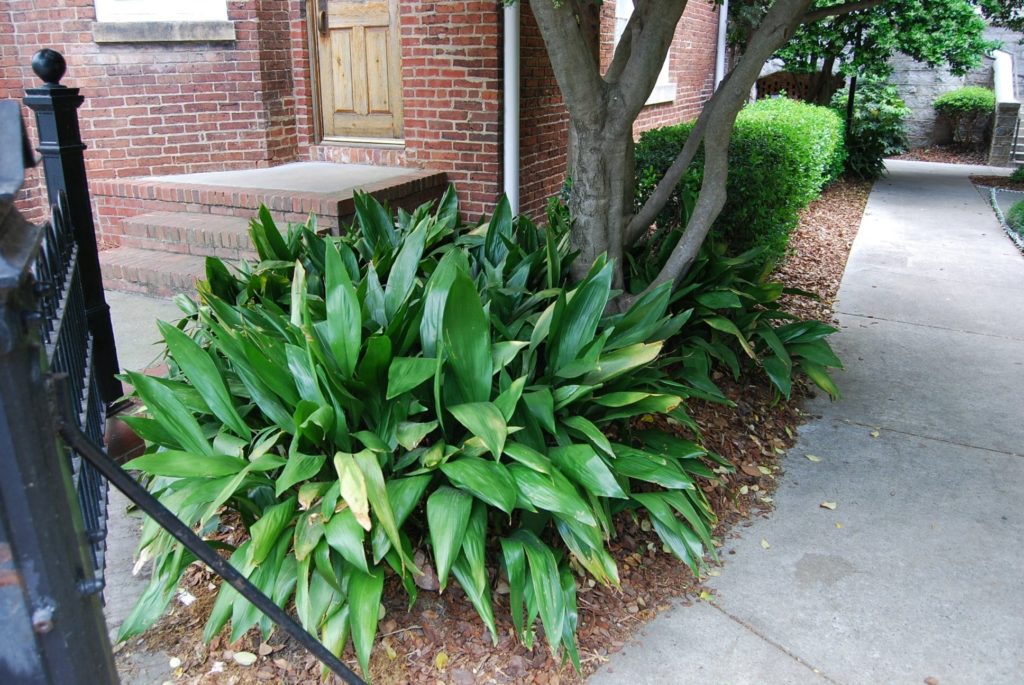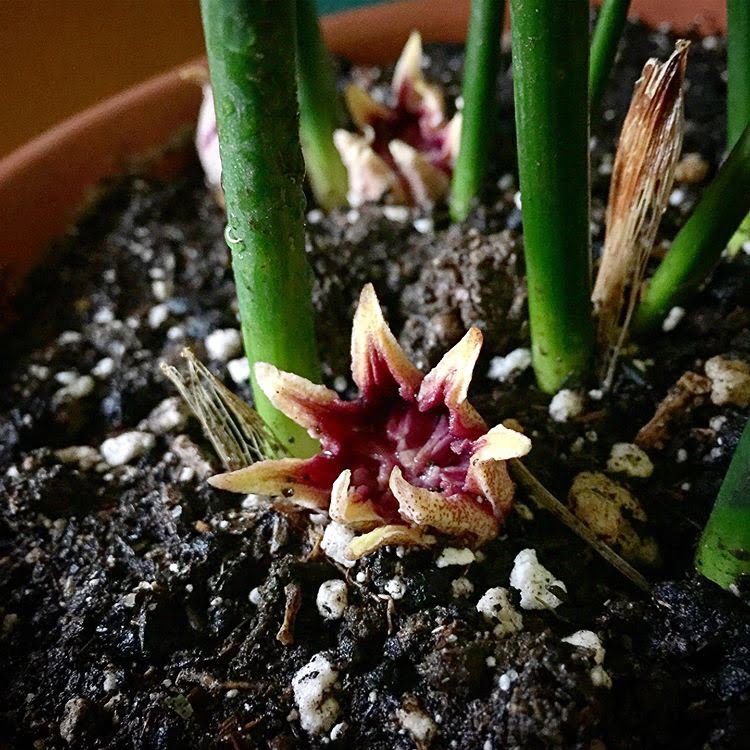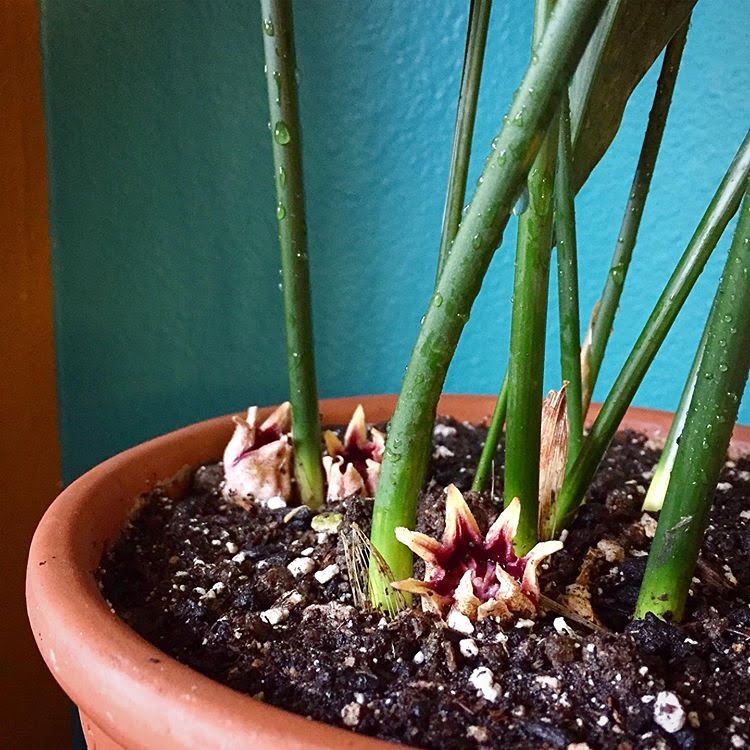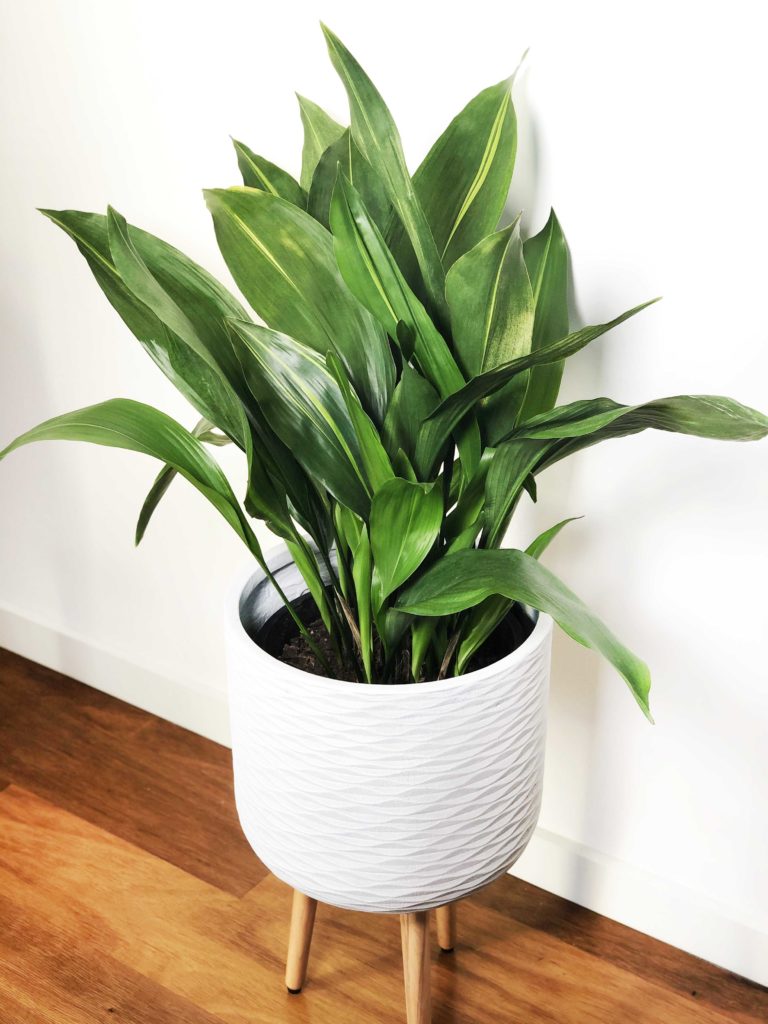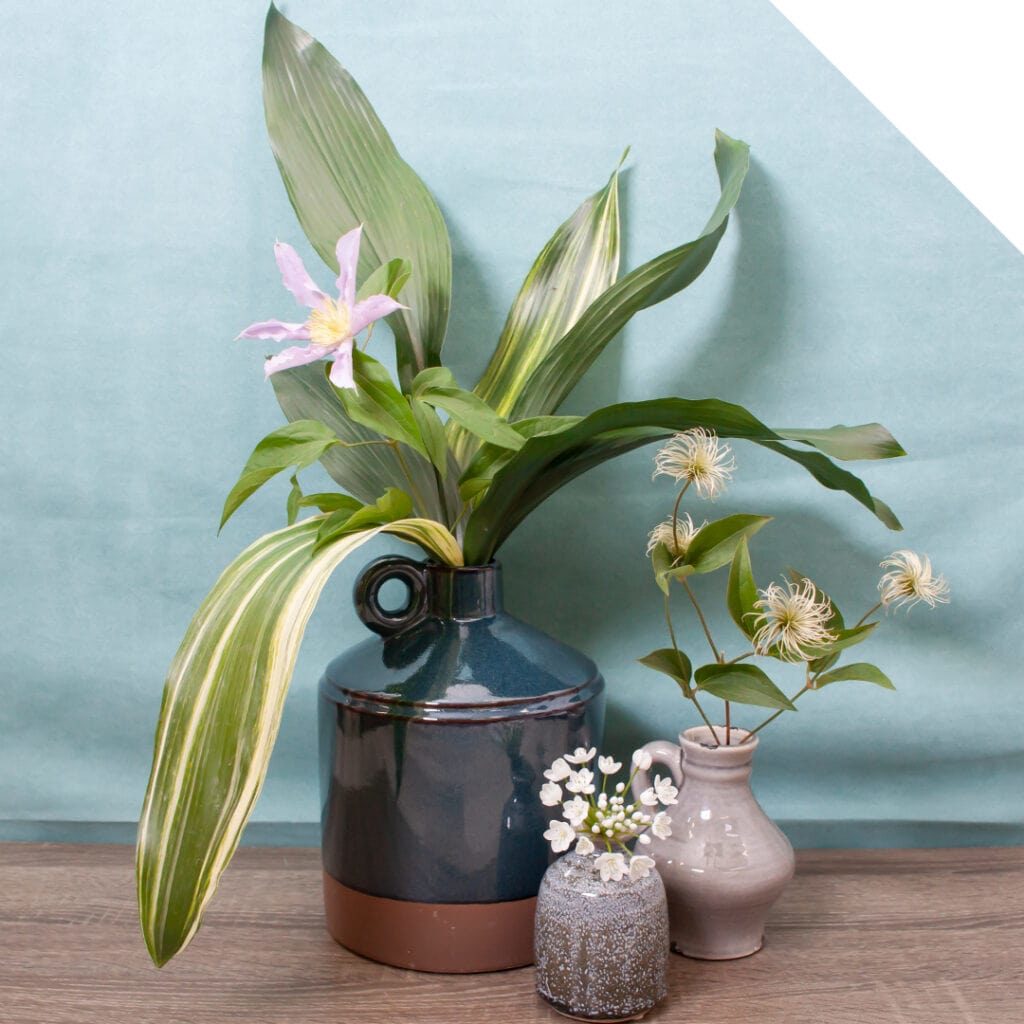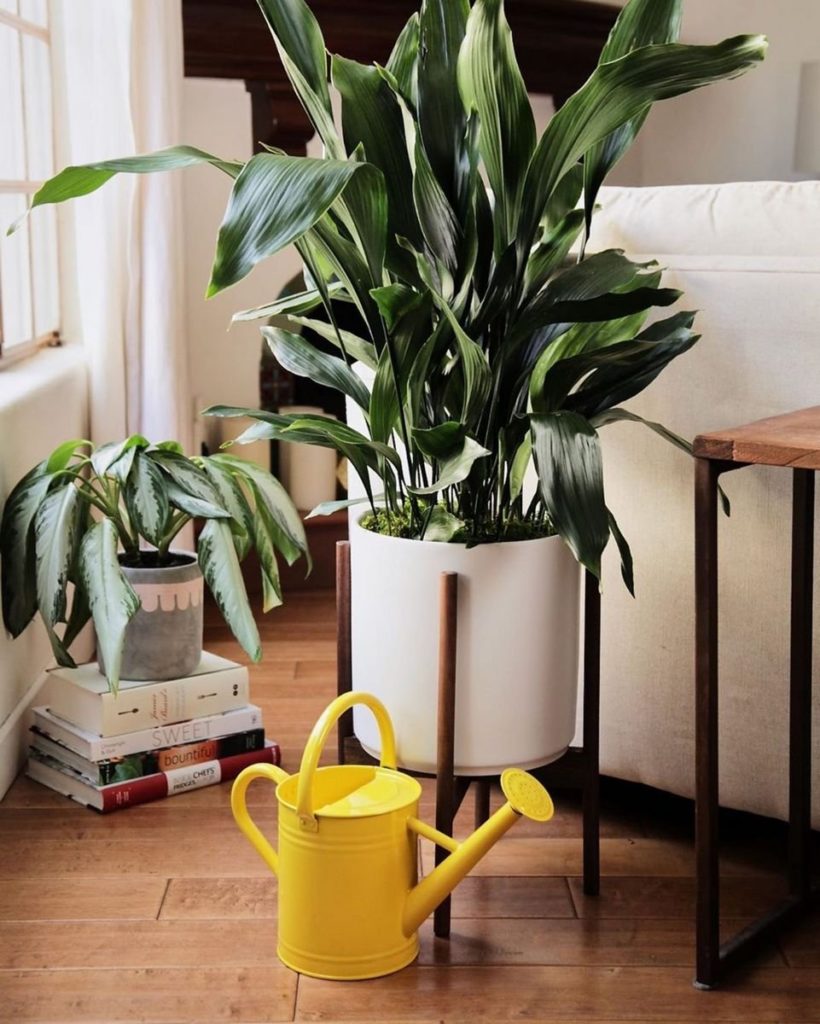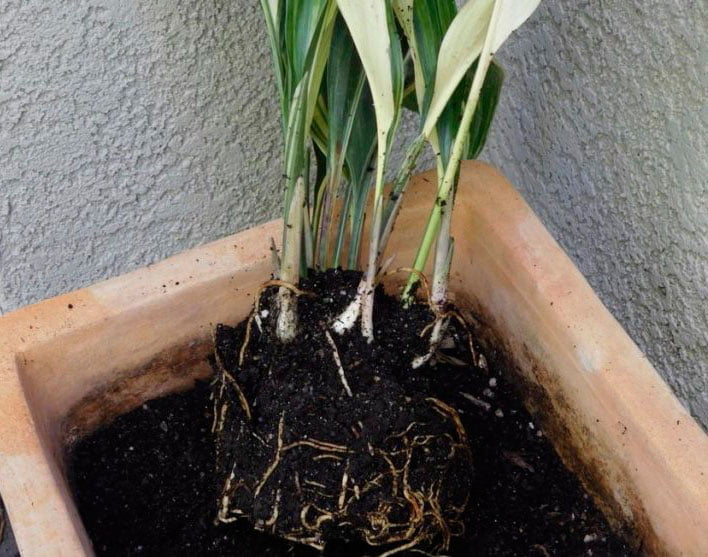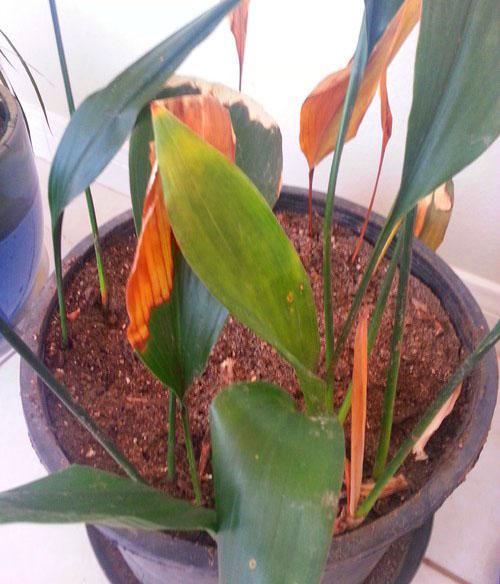Aspidistra – a decorative indoor plant, thanks to its clean forms and adaptability to various conditions, has gained wide popularity in the decoration of both domestic and office interiors. In this article, we’ll provide a detailed look at this striking “pet.”
Description of the Aspidistra Plant
Aspidistra belongs to the Asparagus family (Asparagaceae) – the asparagus family.
The only species of aspidistra used as a houseplant is the High Aspidistra (Aspidistra elatior). Various varieties have been bred based on this species, but only one is commonly found on the shelves of flower shops and home windowsills – Variegata. This variety of aspidistra has become very popular due to its striking coloring. Its leaves are adorned with longitudinal stripes that haphazardly traverse the green background, displaying color transitions from white to beige.
In everyday life, the domestic aspidistra has acquired a few nicknames: “cast-iron plant” for its undemanding nature and “Asian lily of the valley” for the shape of its leaves.
Aspidistra is a perennial plant with an impressive lifespan. With minimal attention and care, it can live for several decades.
In 12 months, aspidistra produces only 5 leaves. It grows very slowly but eventually reaches substantial sizes, up to 75 cm. The primary color of the leaves is dark green, interlaced with creamy veins. The leaves themselves are perched on high stems and have an elongated, oval shape, reaching a width of 15 cm.
The roots of aspidistra have a rather intriguing appearance, resembling creeping gray snakes.
During the winter months, the plant begins to bloom. Unfortunately, the flowering phase is not particularly spectacular, and if you don’t observe the plant closely, it can go unnoticed. The flowering period involves the appearance of small purple flowers at the base of the stem, closer to the rhizome. These flowers appear as though they are lying on the ground.
Typically, people prefer to remove the flowers immediately to prevent them from interfering with the plant. However, if you set out to do so and artificially pollinate them, you can obtain relatively large berries from these flowers, resembling pears in appearance.
Growing Conditions for Indoor Aspidistra
The title “ironclad” is not given to this plant without reason. Aspidistra requires minimal attention; the only thing that can disrupt its life is sub-zero temperatures.
Light and Placement
Aspidistra cannot tolerate direct sunlight. A container with its beautiful tall leaves can be placed anywhere in your home, seamlessly blending with the interior. Aspidistra will thrive in the shade, with diffused light, in a dark corner, or in the center of the room. It doesn’t mind whether it receives direct sunlight or is illuminated by a designer lamp.
If you’ve chosen a plant with white veins, it’s better to place it in brighter spots. If you want the leaves to be dark green, you can deprive it of natural light.
Temperature and Ventilation
The plant is not demanding when it comes to temperature. The ideal temperature for it is around 15 degrees Celsius (59 degrees Fahrenheit). Only a temperature drop below 10 degrees Celsius (50 degrees Fahrenheit) can negatively affect Aspidistra. It doesn’t like heat, and 25 degrees Celsius (77 degrees Fahrenheit) is the maximum comfortable temperature. However, if the temperature fluctuates and exceeds the upper and lower limits of its comfort zone, it won’t greatly affect the health of this “ironclad” plant.
Aspidistra is also resistant to drafts and is not bothered by ventilation. From early spring to late autumn, you can place the plant on a balcony, a loggia, or a veranda. Aspidistra does not react to dust, smoke, or other emissions.
Caring for Aspidistra in Home Conditions
Aspidistra is perhaps one of the most independent indoor plants. It requires nothing more than occasional and sparing watering.
Watering and Humidity
Surprisingly, this large-leaved plant is indifferent to moisture. Aspidistra does not like wet soil or a humid atmosphere. Its fleshy roots store water and can rot in overly damp soil. Therefore, the best way to water it is from the bottom (by pouring water into the pot’s saucer) or by adding a small amount of water around the container’s edges. You should water Aspidistra very infrequently, only when the soil in the pot becomes completely dry. If the room temperature exceeds 25 degrees Celsius (77 degrees Fahrenheit), you may need to water it more often.
There’s no need to humidify the air for Aspidistra. It is not affected by drought or artificial heating, which can dry out the air.
Dust is not the enemy of Aspidistra, but if you want its leaves to shine with a beautiful gloss, you can wipe them with a damp sponge.
Fertilizing and Fertilizer Composition
Aspidistra also doesn’t appreciate heavy fertilization. Once a year, you can fertilize the soil with special fertilizers for leafy decorative plants, but use half the dosage indicated on the package.
Repotting, Containers, and Substrate
From the previous sections, it’s clear that Aspidistra doesn’t like disruptions in its life. Therefore, you should only repot the plant when its root system has grown significantly and it’s becoming too crowded in its current pot. This procedure should be done no more than once every two years, preferably at the end of winter or the beginning of spring.
Although Aspidistra can tolerate repotting without problems, it’s best not to disturb its root system. The plant, along with the soil around its roots, should be simply transferred to a larger container, maintaining the same level of root depth.
For Aspidistra, it’s best to choose wide but shallow containers and pots. Any type of soil will work, preferably with minimal fertilizers. Adding drainage to containers for Aspidistra is not necessary.
Diseases, Pests, and Growing Problems
Aspidistra is unique not only in its care requirements but also in its resilience to diseases and pests. It is not susceptible to fungal infections or insects. In rare cases, thrips or spider mites may infest Aspidistra, but this can only happen if neighboring plants are already infested. In such cases, you should treat Aspidistra’s leaves with the same insecticide used for the infected plants.
The only thing that can harm this “ironclad” plant is excessive watering. When there’s too much moisture, the roots begin to rot, and even by removing the damaged roots, saving the plant becomes impossible.
Propagation of Aspidistra
Aspidistra lives its life and reproduces independently, requiring no external assistance or intervention. The plant slowly spreads and produces young shoots. During the colder months, you can carefully separate these shoots and plant them in separate containers.
It will take several years for a complete root system to develop, and a few more years for Aspidistra to transform into a decorative indoor plant with beautiful leaves.
Read our special article about all popular house flowers and plants Indoor Plants: Names and Photos with Descriptions.
